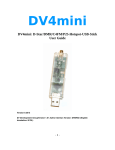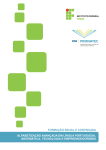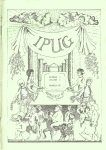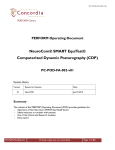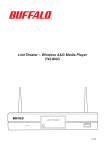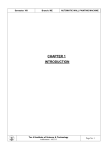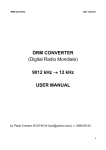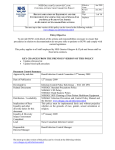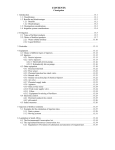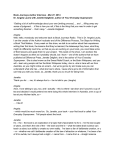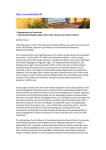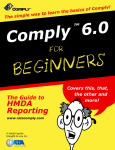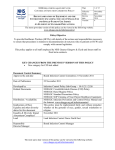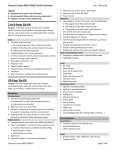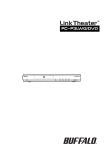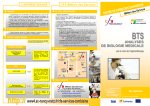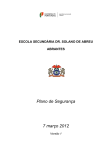Download December - Midlands Amateur Radio Club
Transcript
AFFILIATED TO THE SARL & IN ASSOCIATION WITH THE NATAL CARBINEERS Chairman & Clubhouse Manager BertCornell, ZS5MQ Committee Members Rod Radford, ZS5RK Treasurer and Secretary Craig Dalgleish, ZS5CID VHF, Repeaters & Hamnet Mike Boast, ZS5BGV Minutes Secretary Shaun Rudling, ZR5S VHF, Repeaters & Digital Willem Prinsloo, ZR5ZS Asst. Clubhouse Manager, PR and Social Events Wessel du Preez, ZS5BLY Vice-Chairman and HHN Editor ! "# $%$'& ( ) *+, --.0/21435*65*,7- 8-69;:%.0< The Chairman's Fax The year 2006 has almost left us and your committee is trying to tie up any loose threads that may be dangling around. It has been a most successful six months for the club both financially and member wise with a steady increase in radio orientated activities. What a pity that propagation is at it's lowest ebb! We must thank the five man team who went up to Underberg this past week along with OM's Wessel and Craig to attend to the repeater where they re-installed the equipment. Stout effort chaps and I am sure that we will all enjoy using the 775 channel for the Southern Drakensberg area. Our end of year function is only two weeks away. If you would like to attend but have a transport problem, please contact the writer or a committee member and transport will be found there and back. Remember, the date is 10th December at 11:00 hrs. A good time is expected to be had by all that attend!! Remember to talk to OM Rod about the squasher project. There are still a couple of kits available. Don't forget the local Wednesday Club Net at 19:30 hrs on 3.620 MHz with a possible QSY if the QRM from the AM gang gets too bad. We have been going up plus minus 10 kHz. The idea is to have a swop section and a technical help forum. Please support this effort. There will be no meeting at the drill hall in December, but the club house will be open each Saturday. CU there, 73 de ZS5MQ. ********************* The Club meets on the third Saturday of each month, except December, at 11h00 at the Natal Carbineers Conference Centre, Geere Street, PMB. Sunday Morning Bulletins (MARC and SARL) as well as the Club Net from 07h45 on 3620 kHz and the 145.750 MHz repeater Sunday Club Net Controller: Mickey Esterhuysen, ZS5QB National News Bulletin: Robin Seal, ZS5MRS From the Editor We have reached the end of yet another year and soon we will have to remember to write 2007 on our correspondence and cheques. Before we get there, it may be a good idea to stop and look back at the year gone by. As far as the club is concerned, it was a good one with lots of activity on the radio front, especially on the VHF and digital scenes. Our repeater linking programme is making good progress and seems to be generating more activity on our VHF and UHF bands other than using the repeaters. What about you, the individual? Come and join in the activities of the club and get more enjoyment from your hobby. Being a member is like operating a bank account; the more you put into it, the more you get out of it! Do not be troubled by the passing years, they have a lot to go for them as so aptly described by William Wordsworth in his poem The Fountain: Thus fares it still in our decay: And yet the wiser mind Mourns less for what age takes away Than what it leaves behind. For those of you that need something exciting to do during the holidays, why not try digital voice on the HF bands? Shaun has his software running and is eagerly awaiting an opportunity to test it. The software is called WinDRM and is available for free on the Internet. Hopefully we may also entice some of our more distant readers to join us in this experiment. Let's try it, it may just compensate for the poor propagation that we are now experiencing! [Please note that this software mode is not compatible with the hardware units available from AOR or TAPR. and therefore only likewise equipped stations will be able to communicate]. From my cluttered editors' desk I would like to wish all our readers a Blessed Christmas and a Healthy and Productive 2007. Wessel, ZS5BLY. Getting things up in Underberg If ever you have doubted the ability and willingness of MARC members to roll up their sleeves and do some hard work, think again. Our repeater on Bungalow Kop has been giving problems and needed some TLC. The major problem was the antenna that produced an irritating crackle when in use. As we share the tower with a commercial firm, we could not drop it to repair our antenna so a new one was purchased and a 12m mast prepared. The two 6m sections were taken up to the site and the repeater box was brought down for its TLC session. Now to get it all back up and operational. The basic laws of physics dictate that two people are not going to raise a 12m mast on their own and a call was issued for some assistance. We hoped for one or two able bodied guys to volunteer. What methods were were used to effect the resulting visit of no less than five members was never revealed. William, ZS5WC came down from Estcourt to Mickey, ZS5QB in Pietermaritzburg who then also collected Maurice, ZS5MR, Bob, ZS5CU and Peter, ZS5PJ. Here in Himeville all seven of us were squeezed into a well matured Land Rover together with antenna, large mounting bracket and all the required tools and set off on our 25km dusty journey. About PAGE 2 15km out of town Craig suddenly realised that he had left the antenna at home! We proceeded to the site, dropped off the five visiting experts and returned to collect the antenna. On our return, the two halves of the mast were already joined and the support bracket bolted to the wall of the hut. We mounted the antenna, soldered the connectors and raised the mast in position. The smoke test revealed an SWR of greater than 10! Down came the mast for an inspection and some measurements. What a shock we got. The vendor of the antenna instructed us to use Copperweld on all screw-joints and this proved to be an April Fool's joke. It was cleaned and checked on the ground – we now have a 1.1: 1 SWR! So up the mast has to go for the second time. By now we had the experience and hoped for a speedy operation. The mast, however, had other ideas – when about half-way up it buckled and down came the top portion landing the antenna on a split pole fence. We cut the mast, straightened the antenna and tried again: this time it worked. The cavities were adjusted and contact was made with Shaun, ZR5S. With everything operational, the now very hot and dusty team retired to the QTH of ZS5BLY to enjoy some refreshments whereafter our visitors returned to PMB for a well deserved rest. Most of them took a day or two to recover from the excess dose of UV encountered here in the rarefied atmosphere of the Drakensberg but on last count were all back to normal. The photo below shows the tired team after making the final adjustments – thanks a million, guys! Wessel, ZS5BLY From left to right atop the 1877m high Bungalow Kop: Maurice, ZS5MR: Peter, ZS5PJ : Craig, ZS5CID : Bob, ZS5CU : William, ZS5WC : Mickey, ZS5QB. Other repeater news The next phase in the linking process will be the Estcourt repeater. The radios are with Craig who is checking them out and also building the control circuitry to accommodate the UHF link. Tests will be done by William to verify that the UHF link to Pinewood is reliable and determine what type of directional antennas will be required at both ends. The VHF antennas are being built by Wessel who will also take care of the UHF Yagis if required. PAGE 3 Fingerprint as Password (Part 2) Feature extraction The story, however, does not end at the sensor. Initially the captured image will be in a raw format; little can be done with this as it stands, as it requires a lot of memory to store it. Comparing a print with many other images on this basis would require a lot of computing power. Instead, we extract some features from the image. Let us look more closely at a fingerprint: the basic classification is into the arch, the loop and the whorl. Particular features within the pattern include ridge ends, bifurcations, crossovers, lakes and dots – collectively called 'minutiae' in the jargon. Obtaining the orientation and position of these is enough to give a clear characterization. About 10 to 20 minutiae suffice to make a reliable decision. The reduced data set (or template) is many orders of magnitude smaller than the original data, and generally less than one kilobyte. It is only this data set that the computer must compare, so a large number of comparisons can be carried out quickly. The processing also removes the effect of translations and rotations of the image. Much software has been developed for this task: an almost innumerable range of different approaches have been taken. Applications The most important application area is in access control for computers. This is especially important for laptops and PDAs, which are frequently stolen. Many such devices now include built-in fingerprint sensors. Thanks to falling prices more and more devices are being fitted with sensors, in particular mobile phones. Some models can distinguish between up to ten different fingerprints, so that the device can be used by several different people. Other devices with built-in fingerprint sensors include USB hard drives, memory sticks, and card readers. The sensors will increasingly be used for securing financial transactions at cash machines and for online banking. In the future the fingerprint of the owner will be securely stored in identity cards and credit cards, and they will also be used for authenticating e-mails using digital signatures. Direct physical access to rooms and devices can be ensured by coupling fingerprint sensors with door openers. Departure terminals in airports will be able to process passengers more rapidly. Cars, construction machinery, boats and aircraft will also be protected against theft. The long-term view The market is growing rapidly. In a few years the fingerprint system market will be worth billions. Data protection advocates warn of a Big Brother society, but this is already with us: the widespread use of fingerprint sensors will not make the overall situation significantly worse. The minutiae of the fingerprint cannot be regarded as being as private as the details of one's bank account or medical record. If the minutiae should fall into the wrong hands, the recipient suffers from the immediate disadvantage that it is not possible to reconstruct the entire fingerprint from them. In any case this technology will do more to make criminals' lives harder than it will cause inconvenience to their honest fellow citizens. (Taken from Elector Electronics Oct. 2005) Editor's comment: Roll on, fingerprints, I cannot wait for the day that I can throw away all my keys and replace them with something that I cannot lose, misplace or forget to take with me! Not to mention forgetting my PIN when standing in the front of a long queue at the auto bank!! The arrows indicate the so-called 'minutiae' as observed in a typical fingerprint PAGE 4 The Power to do Most radio amateurs seem to have a collection of fixed-voltage power supplies in the shack. These are mostly 5V, 6V or 12V units that are dedicated to existing equipment in the shack. A variable supply can be very usefull and used for testing all those ham-aids that we are constantly constructing. The unit need not be related to the beast that can deliver 25 or 30 Amp and powers your main rig. Something around 1 to 1,5A and variable from (say) 3V up to 25V would do fine. The design shown below is based on the National Semiconductor LM317 which is an adjustable 3-terminal voltage regulator capable of supplying in excess of 1,5A over a 1,2 to 37V output range. The device is easy to use and requires only two resistors to set the output voltage. Included in the chip are current limit, thermal overload protection and safe area protection. The best news is that the device is available locally and that it is affordable! Variable output-voltage power supply For the LM317 the output voltage is calculated by using the following formula if we ignore the contribution of the adjustment current and R3: Vo = 1,25 (1+R3/R2) In the circuit above we have made R3 variable and can therefore alter the output voltage. Theory states that a 5k variable will just not allow us to reach 25V at the output, so we use a 10k variable. Remember that the LM317 needs about 3V across it to function. The highest output is then restricted to the voltage on C1 minus 3V. If you are going to build one, please take note of the following: 1. Buy the TO-3 version of the LM317 – that is the metal version - and mount it on a 75x100mm finned heat sink. 2. Attach R2 as close as possible to the regulator – preferably at the IC pins. 3. Take care when operating at low voltages and a high current that you do not overheat the device. With an input voltage of 30V and an output of 5V we are dissipating 25W in the IC if we draw 1A! 4. Diodes D3 and D4 are protection diodes to prevent the external capacitors from discharging through low current points into the regulator. 5. If at all possible, use a solid tantalum capacitor for C3. 6. Fit an output voltmeter and ammeter to the supply so you can set the voltage and monitor the current. 7. Be carefull when working with the mains supply – it can really kill you! Happy experimenting! PAGE 5 How one expert sees DVM's........ [ The following notes were taken from a book by Robert Pease called “Troubleshooting Analog Circuits”. Bob is a regular contributor to the professional engineering magazine EDN where his humoristic approach to matters technical has made him a legend He is a senior design engineer at National Semiconductor Corporation and has probably designed most of their linear voltage regulators.] As I mentioned before, digital meters are always more accurate than analog meters........except for when they aren't. The steadiness and irrefutability of those glowing, unwavering digits is psychologically hard to rebut. I classify the readings of the DVM or DPM with any other computer's output: You have to learn to trust a computer or instrument when it's telling the truth, and to blow the whistle on it when it starts to tell something other than the truth. So, if you get into an argument with a digital meter, don't think that you must necessarily be wrong. You can usually get an opinion from another instrument to help prove where the truth lies. Don't automatically believe that a piece of “data” must be correct just because it is digital. And be sure to hold onto the user's manual that comes with the instrument. It can tell you where the guaranteed error band of the DVM gets relatively bad, such as for very low resistances, for very high resistances, for low AC voltages, and for low or high frequencies. Still DVM's are very powerful and useful instruments, often with excellent accuracy and tremendous linearity and resolution. I've counted some of these ultra linear meters as my friends for many years. I really do like machines that are inherently, repeatedly linear, as some of these DVM's are absolutely first-class. But even the best machine is still subject to the adage, “Heat is the enemy of precision.”For example, some DVM's have a few extra microvolts of warm-up drift but only when you stand the box on its end or side. Some of them have a few microvolts of thermal wobble and wander when connected to a zero-volt signal (shorted leads), but only when you use banana plugs or heavy gauge leads – not when you use fine wire. The fine-wire leads apparently do not draw as much heat from the front-panel binding posts. So even the best DVM auto-zero circuit cannot correct for drifts outside its domain. What is not well known is that even the better DVM's may pump noise back through their input terminals and spray a little clock noise around your lab. So if you have a sensitive circuit (your radio receiver? Ed.) that seems to be picking up noise from somewhere, turn off your DVM for a few seconds to see if it is the culprit. An analog meter will not generate much noise at all, by comparison to a DVM........... .......and another views the analogue versus digital world [ Most textbooks define a digital signal as being nonlinear and discontinuous - now read on] Now that we've had a few more decades to reflect on nature, to observe convergences between organisms and computer programs, and see ways of simulating electrical behavior of organisms with computers (eg. neural nets), it's possible to make some definite statements about what is analog and what is digital. First of all we have to dispose of nonlinearity and discontinuity in nature as arguments for digital. Linearity of real-world phenomena has nothing to do with the analog versus digital question. The real analog world is full of nonlinearities. My employer and many others manufacture a number of purposely, predictably, and accurate nonlinear devices – for example, devices with natural logarithmic or trigonometric ( instead of linear) responses. They are all analog devices. Second, discreteness and discontinuity really have little to do with the analog versus digital question. You don't have to go to microscopic phenomena to find discrete analog devices. My employer also manufactures analog switches and comparators. They are discontinuous (hence discrete) devices. The switches are fundamental digital to analog converters: the comparators are fundamental to digital converters. But voltage or current, representing digital quantities, operates the switches; and the outputs of the comparators are voltages representing the choice of a digital 0 or 1. Thus these basic data converters are analog to analog devices. PAGE 6 Machines like Men We are surrounded by machines that seemingly behave as if they can think for themselves. The modern washing machine checks the load to be washed, determines whether the washing is white or coloured, finds out how dirty it is and then adjusts the washing cycle accordingly. Is it intelligent? In order to make such a decision we better find out what is meant by intelligence. The word is derived from the Latin “intellectus”which means 'understanding' and is described as the ability of reasoning, knowing and thinking as distinct from feeling. A broader definition states that it is the ability to relate seemingly unrelated information. The above washing machine is said to be equipped with Artificial Intelligence (AI), something bestowed upon it by a human being. AI may best be described as the science of making machines do things which, on the whole, if performed by humans, would be attributed to intelligence. It is as pointless to become paranoid about the word 'intelligence' when applied to computers as it is about using the word 'flying' for both birds and aeroplanes. Because some AI systems can be made to adapt themselves, it is possible to make them learn from their own mistakes. A computer can end up improving its own programme to a standard that no human could have accomplished. Such a machine will pass the so-called turing test, proposed in 1950 by the British mathematician Alan Turing as a criterion for judging 'mechanical intelligence'. The test is a hypothetical procedure based upon interrogation, in which the human interrogator can communicate with another human and a computer via a terminal. If it is impossible to tell the difference, then the computer may be said to be acting intelligently. Is it possible for a computer to take decisions which, if taken by a human would indicate the use of intuition? The answer to this is “Why not?”. Very few authorities in AI believe that there is anything fundamental about computers to stop them eventually behaving in this way – this is of course a highly contentious issue. There are many practical developments from AI research such as expert systems. In such systems the knowledge of human experts in a particular field is reduced to a set of rules, including such less precise forms as 'rules of thumb'. The computer then employs this knowledge base, using an inference engine to work out the logical consequences of a set of rules taken together. A well known example is the expert system 'Mycin' which was developed to help in the diagnosis of infectious diseases such as meningitis. A major area of application for these systems is that of robotics and other control systems. It is said that a human pilot will not be able to fly a plane like the F15 without the aid of an intelligent control system as the plane is inherently unstable. On a more mundane level, the engine management computers in modern passenger cars do wonders for the performance of these machines and prevents some drivers from driving their engines to destruction. Looking at the broader scene of vehicles and traffic control, we may take a closer look at the socalled Intelligent Roads – a system which is being designed to remove the unreliable and often unpredictable behavior of human controlled vehicles and at the same time enable the present road infrastructure to accommodate higher traffic densities without compromising safety. It remains, however, a question whether drivers are willing to relinquish control over their vehicles to a computer albeit an intelligent one! The European Prometheus project takes a slightly different approach – they install sensors that monitor the drivers' actions as well as the attitude of the vehicle. Should this deviate from what is regarded as appropriate behavior, the control system will take over while at the same time, it broadcasts its intentions to other vehicles in the immediate vicinity so that they may take evasive action. Are we then on the verge of being taken over by computers or are they merely helping to extend human capabilities by performing those tasks at which we are not so good? It is true that they are an immense help in aiding us to make more informed decisions by supplying derived information on a host of subjects. Just think about the information supplied by the SPOT satellites that monitor crops and other activities on earth! At present it is still the humans that have to take action and try to solve the detected problems! After all this, I still love my computer – the only question is whether it cares for me! Judging by some of its actions, I wouldn't be surprised if it does not care a hoot! PAGE 7 Bulletin Readers December 03 December 10 December 17 December 24 December 31 January 07 January 14 January 21 Rod Craig Willem Bert Mike Wessel Shaun Rod ZS5RK ZS5CID ZR5ZS ZS5MQ ZS5BGV ZS5BLY ZR5S ZS5RK Please note some changes in the roster – Willem and Shaun have been having holidays! If you cannot do your bulletin, please ask somebody to do it for you. On the Giggle-Hertz Bands From “Disorder in the Court” Officer, when you stopped the defendant, were your red and blue lights flashing? Yes Did the defendant say anything when she got out of her car? Yes, sir. What did she say? What disco am I at? They said it Hegel was right when he said that we learn from history that man can never learn anything from history. George Bernard Shaw I can resist everything but temptation Mark Twain The future belongs to those who believe in the beauty of their dreams. Eleanor Roosevelt Next meetings 10th December Our end-of-year get together at the Girl Guide Centre, Worlds View. 20th January First Club meeting of 2007. Programme will be announced on a future Sunday bulletin. Why not join OM Bert on a Wednesday evening at 19:30 on 3620kHz? The swop-shop may just have that gizmo that you have always wanted to own! There is also a technical question slot which nobody has used to date – give it a try and tax our club experts. A final note on computers A mother was teaching her three year old the Lord's prayer. Every night the little girl repeated the individual lines until one night she decided to go solo. Everything went very well until near the end when she said: ” .......and deliver us from e-mail ”. PAGE 8








